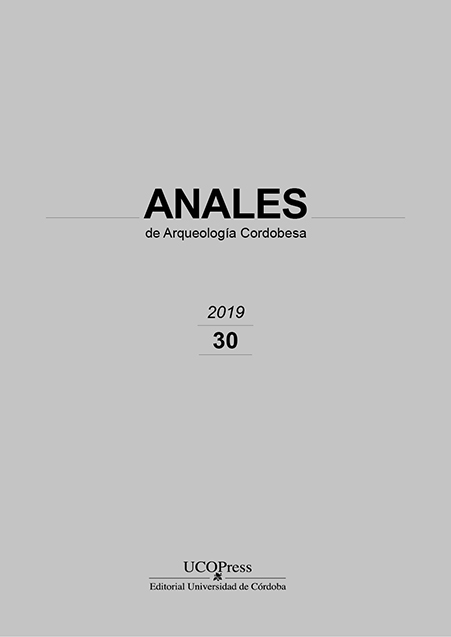The Tartessus crisis and the problem of the 5th century b.C. in Turdetania
DOI:
https://doi.org/10.21071/aac.v30i.12434Keywords:
Tartessus, Turdetania, crisis, aristocracy, Phoenicians, violence, cities-state.Abstract
The crisis of Tartessos in the Lower Guadalquivir originates transformations during the sixth century BC, with the end of the the Phoenician colonial economy and the orientalizing aristocracy, as well as in the internal conflicts which we interpret as the expression of violent movements against Phoenician population and local aristocracy. The new panorama was characterized by different socio-economic and political foundations that have left a distinct archaeological record of Early Iron Age defined by absences (necropolis, sanctuaries, luxury items) better than by the archaeological evidence. The Fifth century BC was defined by a double phenomenon of transformation and continuity: transformation in the political foundations of social coexistence –decay of the gentile aristocracy and emergence of civic values– and the consolidation of the cities-state, and continuity in the structures of the territories, although it was then that began to define the “boundaries” of the most important cities, including Carmo.Downloads
Download data is not yet available.
Downloads
Published
2019-12-15
How to Cite
FERRER ALBELDA, E., & GARCÍA FERNÁNDEZ, F. J. (2019). The Tartessus crisis and the problem of the 5th century b.C. in Turdetania. Anales De Arquelogía Cordobesa, 30, 51–76. https://doi.org/10.21071/aac.v30i.12434
Issue
Section
Artículos
License
Aquellos autores/as que tengan publicaciones con esta revista, aceptan los términos siguientes:- Los autores/as conservarán sus derechos de autor y garantizarán a la revista el derecho de primera publicación de su obra, el cuál estará simultáneamente sujeto a la Licencia de reconocimiento de Creative Commons que permite a terceros compartir la obra siempre que se indique su autor y su primera publicación esta revista.
- Los autores/as podrán adoptar otros acuerdos de licencia no exclusiva de distribución de la versión de la obra publicada (p. ej.: depositarla en un archivo telemático institucional o publicarla en un volumen monográfico) siempre que se indique la publicación inicial en esta revista.
- Se permite y recomienda a los autores/as difundir su obra a través de Internet (p. ej.: en archivos telemáticos institucionales o en su página web) antes y durante el proceso de envío, lo cual puede producir intercambios interesantes y aumentar las citas de la obra publicada. (Véase El efecto del acceso abierto).


